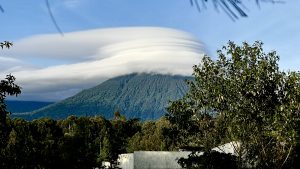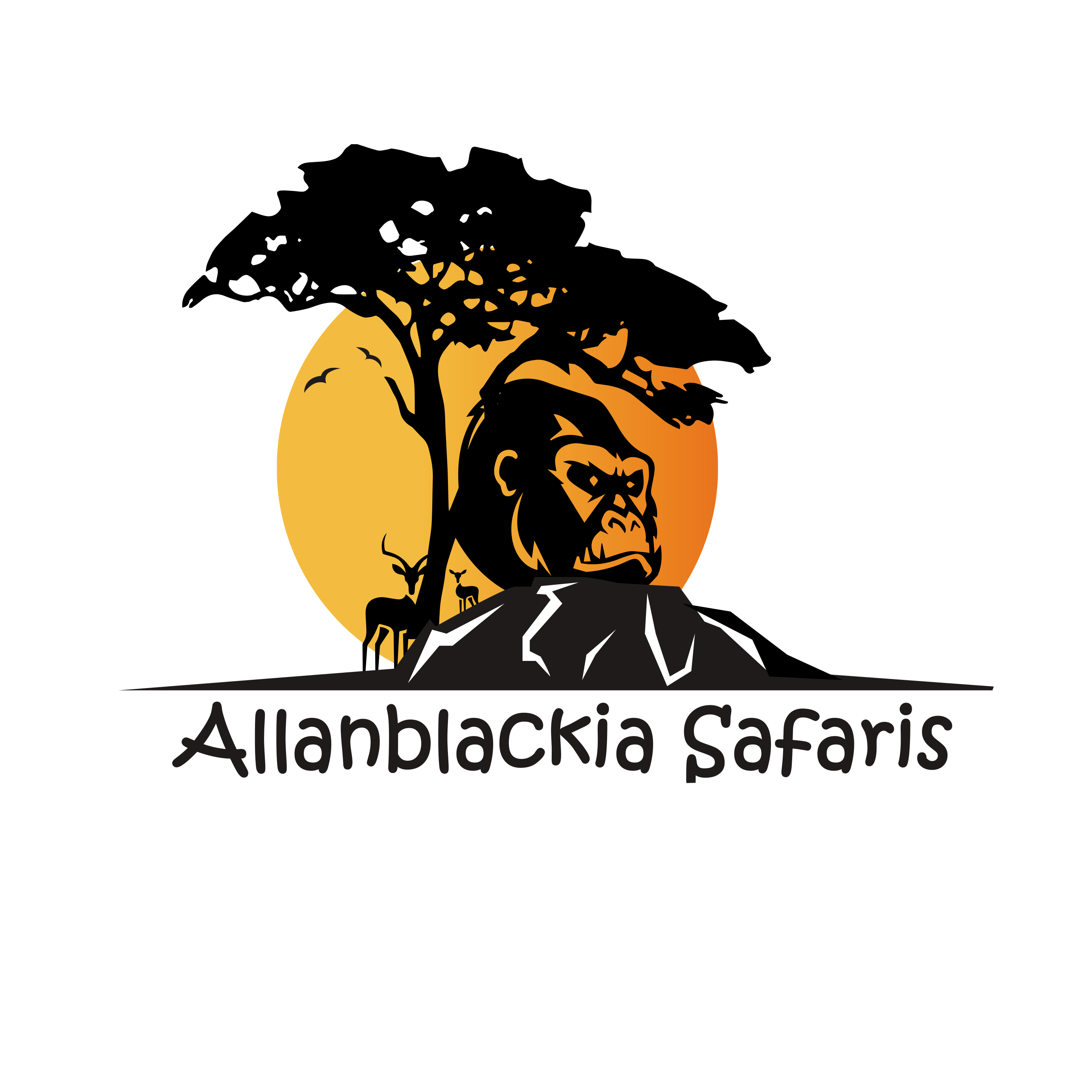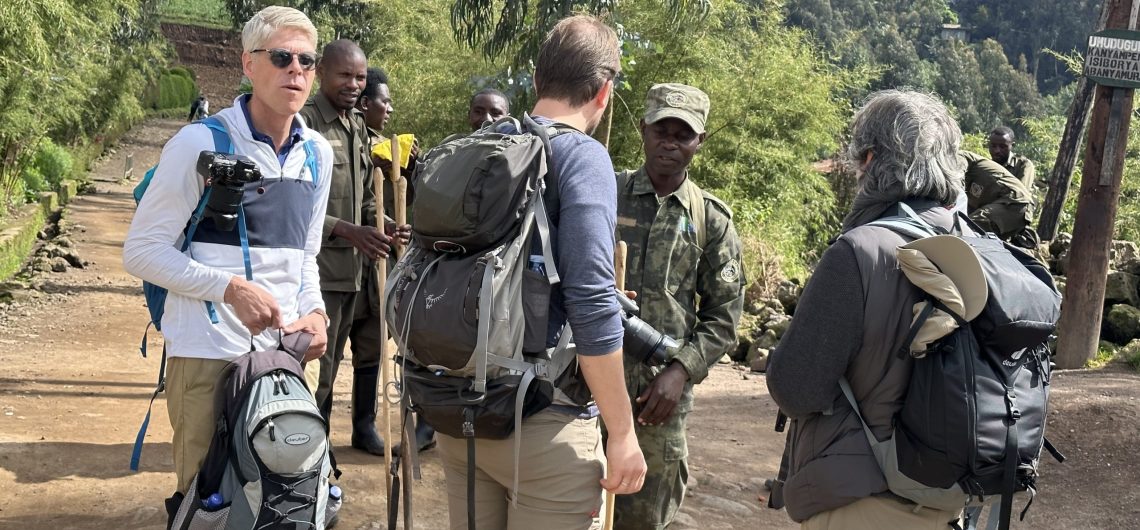Volcano climbing in Volcanoes National Park.
Volcano climbing as a tourist activity offers an incredible experience to guests as they traverse through the thick Afro-montane forests overlooking distinct landscapes. The activity exposes the traveler to the thrill of reaching the top of the volcanic massif.
The breathtaking views of the surrounding diverse landscapes unveiled when at the summit and the rumbling sound of the world beneath you are nothing but an exciting experience. It feels like being on top of the world.
Guests on the hike are exposed to views of diverse fauna and floral species especially the primates including the black and white colobus monkeys, golden monkeys, l’hoests, vervets, olive baboons, and crowned monkeys.
Visitors also set their eyes on beautiful bird species, especially the hamerkops, African fish eagles, turacos, Abyssinian ground hornbill, black bee eaters, cinnamons, egrets, cuckoo shrike, secretary birds, African paradise flycatchers and scavengers.

Volcanoes National Park.
Volcanoes National Park is situated on the northern edge of Rwanda in the Virunga conservation area. Volcanoes climbing is one of the adrenaline-triggering activities visitors can indulge in when in the breathtaking Volcanoes National Park.
The park is home to a large scope of biodiversity including a diverse array of breathtaking landscapes. The park comprises five of the eight Virunga mountain ranges that are available for hiking to visitors all through the year.
The volcanoes available to climb in Volcanoes National Park incorporate;
Mount Karisimbi.
Mount Karisimbi is one of the five volcanoes of Rwanda in Volcanoes National Park. It is an extinct stratovolcano, part of the diverse Virunga mountain ranges. It is situated at the border of Rwanda and the Democratic Republic of Congo.
Karisimbi elevates up to 4507 meters above sea level, it is the highest of the 8 Virunga mountains and therefore offers an incredibly distinguished climbing experience. The mountain lies in the Albertine Rift in the western arm of the Eastern Great Rift Valley. It is boarded by Mikeno in the North, Bisoke in the East, and Nyiragongo in the West.
Mount Bisoke.
Mount Bisoke volcano also forms a section of the 8 Virunga mountains. It is perched in the western arm of the African Rift Valley. It lies along the Rwanda and Democratic Republic of Congo border.
The summit of this mountain is located in Rwanda therefore visitors head to Volcanoes National Park to have the golden opportunity to access it and enjoy the beautiful views of the park and the challenging yet so interesting hike. Bisoke elevates high up to 3711 meters above sea level.
The mountain last erupted in August 1957. A climb to the top of Mount Bisoke takes six to seven hours including the ascent and descending journey.
Mount Gahinga.
The Gahinga dormant volcano lies between Mount Muhabura and Mount Sabyinyo Ranges. It is the smallest of the three volcanoes in the park.
Gahinga elevates up to 3474 meters above sea level and therefore it equally offers an interesting hike. It is known as the easiest volcano to hike and that is why it is popular with many travelers especially those who cannot withstand extra elevations but would wish to have the experience. Gahinga is a Kinyarwanda word meaning a “small pile of stones” which is a description of the physical look of the mountain. Mount Gahinga has a swampy caldera on its peak which offers captivating views that are good for sightseeing and photography. The Afro-montane vegetation of the volcano further makes it more beautiful.
Mount Sabyinyo.
Sabyinyo too is an extinct volcano in the East African Rift Valley found in the Virunga Conservation area. The mountain is famous because it’s the oldest of the Ranges. Sabyinyo means old man’s teeth in English.
It lies in the northeast of Lake Kivu, a picturesque great lake in the region. The hike to the summit of the mountain therefore uncovers the breathtaking views of the underlying lake and the riverine vegetation. This further makes it the place to be for adventure-seeking travelers, and nature and photography enthusiasts.
The mountain’s last eruption dates are unclear. Sabyinyo elevates up to 3669 meters above sea level, a reason why it provides an incredibly exhilarating hiking experience.
Mount Muhabura.
Mount Muhabura is also known as Muhavura. It is an inactive volcano situated in the Virunga massif. This breathtaking mountain lies on the border between Rwanda and Uganda. It is shared by the two countries due to its vast size. The magnificent mountain elevates up to 4127 meters above sea level.
The word Muhabura means the guide when translated into English. Muhabura’s Summit contains a crater lake that provides appealing views to travelers who manage to make it to the top.
It’s a reward that is indeed worthwhile because the views it presents to travelers are out of this world and present extraordinary opportunities for photography and marveling at a hidden beauty in the heart of Africa.
The favorable time to go volcano climbing in Volcanoes National Park.
The dry seasons present the most appropriate times in which one can embark on exciting volcano climbing in Volcanoes National Park. The dry seasons are usually from June to September and from December to February.
Visitors willing to embark on the volcano climbing in Volcanoes National Park are required to pay a non-negotiable fee of $75 per person per climb.

